This article was medically reviewed by Tu Anh Vu, DMD. Dr. Tu Anh Vu is a board certified dentist who runs her private practice, Tu's Dental, in Brooklyn, New York. Dr. Vu helps adults and kids of all ages get over their anxiety with dental phobia. Dr. Vu has conducted research related to finding the cure for Kaposi Sarcoma cancer and has presented her research at the Hinman Meeting in Memphis. She received her undergraduate degree from Bryn Mawr College and a DMD from the University of Pennsylvania School of Dental Medicine.
There are 8 references cited in this article, which can be found at the bottom of the page.
wikiHow marks an article as reader-approved once it receives enough positive feedback. In this case, 91% of readers who voted found the article helpful, earning it our reader-approved status.
This article has been viewed 60,337 times.
Tongue scraping has a long history, both as an element of hygiene and an Ayurvedic cleansing ritual. Research is divided on how well tongue scraping works, and it should not replace other forms of oral hygiene like brushing or flossing; however, many people who suffer from a "coated tongue" or halitosis are convinced of its medical benefits.
Steps
Scraping Your Tongue
-
1Open your mouth. You'll want to open your mouth as wide as is comfortable, but not so wide that it causes discomfort. This makes your tongue more accessible and increases the ease of scraping.
-
2Stick out your tongue. The goal here is to comfortably increase access to your tongue, so stick your tongue outside your mouth as far as you are able.
- Avoid pointing your tongue, as this decreases surface area and makes scraping less effective.
Advertisement -
3Pick up the scraper. Holding the handle of the tongue scraper, place it on the rearmost part of the tongue. How far to place the scraper is entirely reliant on your comfort. Just remember that the farther back it is placed, the more surface area that is scraped. If you feel a tickle or a gagging sensation, that's too far.
- After many scraping sessions, you may be able to place the scraper further back into your mouth than you were in your initial session.
-
4Begin scraping. Apply firm pressure to the tongue scraper. In one slow, smooth motion, pull the scraper from back of your tongue to the front. The rough edge of the scraper will rub against the tongue surface and remove any coating or residue.
- Scraping should involved firm pressure, but never discomfort or abrasion to the skin. When you begin scraping, it is best to err on the side of lighter, rather than heavier strokes and gently increase pressure until the right amount is achieved.
- A maximum number of four to eight movements should be enough for the day.
- Never move the scraper in a backwards direction. Always remember to move your scraper from the back of your tongue to the tip. Going backwards spreads the scrapings back over your tongue and requires you to repeat the scraping.
-
5Rinse the scraper after each stroke. The scraper pushes the coating it removes to the tip of the tongue with every stroke. It may be advisable to rinse the scraper and your mouth after each stroke.
- You can also dip the scraper in a small cup filled with chlorhexidine mouthwash, as the antibacterial substance will destroy almost entirely any bacteria on the scraper.
-
6Clean the scraper after use. Rinse the scraper under the faucet after use, removing any debris or saliva. Ensure that your tongue scraper stays clean and dry between sessions, storing it in a drawer or medicine cabinet.
Choosing a Tongue Scraper
-
1Consider tongue size. If you have a large tongue, a wide profile, u-shaped scraper is the most efficient way to clean your tongue. Children or people with smaller tongues may want to choose a y-shaped scraper.
-
2Think about your comfort. If you have a very sensitive gag reflex, consider this when choosing your scraper.
- Some people opt for a tongue brush, which combines elements of a toothbrush and a scraper. This type of tongue scraper is narrower than the u-shaped scraper but does have a taller profile, which may also trigger discomfort.
- A good rule of thumb is to consider how comfortable you'd be placing your toothbrush near the back of your mouth. If that's problematic, opt for a y-shaped tongue scraper. These are smaller and usually have bent sides to accommodate sensitivity.
-
3Look for efficiency. If sensitivity is less of a concern, get a scraper with multiple blades. Multiple blades expedite the removal of debris. These can be y-shaped, usually with dual blades; however, there are narrower versions with four to five blades that have a similar size-profile to a toothbrush.
-
4Consider material. Tongue scrapers are typically made of stainless steel, copper, or plastic. A metal scraper can be kept long-term and periodically disinfected by boiling in water. Plastic scrapers are cheaper; however, they are intended to be disposable and must be replaced every three to four months.
Understanding Tongue Scraping
-
1Think about tongue scraping as part of your oral hygiene. By itself, tongue scraping cannot ensure good oral hygiene; however, as part of a regimen including brushing and flossing, it has proven benefits.
- Halitosis is caused by bacteria that act on residual food particles in the mouth. These bacteria release volatile sulphur compounds (VSCs), which produce a bad smell.[1] Tongue scraping can remove food particles and bacteria on the tongue and provide a 75% reduction of halitosis symptoms, 30% more than just brushing alone. [2]
- Tongue coating is a common symptom of smoking, dry mouth, and yeast infections. It is unsightly and contributes to halitosis. By scraping this coating off the tongue, patients report better overall oral hygiene and personal comfort.[3]
- Research indicates that, by removing food particles and bacteria from the mouth, tongue scraping can reduce plaque buildup and cavities.[4]
-
2Know that tongue scraping can improve taste. Research indicates that tongue cleansing generally exposes tastebuds and, after two weeks, patients noted improved sense of taste. These results were substantially enhanced by including a tongue scraper in cleansing sessions.[5]
-
3Consider possible digestive benefits of tongue scraping. The Ayurveda, a holistic medical text that originated in ancient India, argues that the "toxic residue" of bacteria and dead cells that forms on the tongue can actually have a negative impact on the digestive system.[6]
Expert Q&A
-
QuestionDo I have to use a tongue scraper?
 Tu Anh Vu, DMDDr. Tu Anh Vu is a board certified dentist who runs her private practice, Tu's Dental, in Brooklyn, New York. Dr. Vu helps adults and kids of all ages get over their anxiety with dental phobia. Dr. Vu has conducted research related to finding the cure for Kaposi Sarcoma cancer and has presented her research at the Hinman Meeting in Memphis. She received her undergraduate degree from Bryn Mawr College and a DMD from the University of Pennsylvania School of Dental Medicine.
Tu Anh Vu, DMDDr. Tu Anh Vu is a board certified dentist who runs her private practice, Tu's Dental, in Brooklyn, New York. Dr. Vu helps adults and kids of all ages get over their anxiety with dental phobia. Dr. Vu has conducted research related to finding the cure for Kaposi Sarcoma cancer and has presented her research at the Hinman Meeting in Memphis. She received her undergraduate degree from Bryn Mawr College and a DMD from the University of Pennsylvania School of Dental Medicine.
Board Certified Dentist No, you can always brush your tongue with your toothbrush, although a lot of people prefer using a tongue scraper. But it is important to clean your tongue. Every time you brush your teeth, clean your tongue!
No, you can always brush your tongue with your toothbrush, although a lot of people prefer using a tongue scraper. But it is important to clean your tongue. Every time you brush your teeth, clean your tongue!
References
- ↑ http://www.ncbi.nlm.nih.gov/pubmed/12593593
- ↑ http://www.ncbi.nlm.nih.gov/pubmed/15341360
- ↑ http://www.mayoclinic.org/diseases-conditions/bad-breath/expert-answers/tongue-scraper/faq-20057795
- ↑ http://www.ncbi.nlm.nih.gov/pubmed/4504526
- ↑ http://www.ncbi.nlm.nih.gov/pubmed/15191584
- ↑ http://www.chopra.com/ccl/the-benefits-of-tongue-scraping
- http://www.mayoclinic.org/diseases-conditions/bad-breath/expert-answers/tongue-scraper/faq-20057795
- http://en.wikipedia.org/wiki/Tongue_cleaner
About This Article
To use a tongue scraper, first open your mouth as wide as is comfortable and stick out your tongue as far as you can since this will make it easier for you to clean. When you’re ready, get the scraper and move it from the back of your tongue to the front in one slow, smooth motion. You should always move your tongue scraper forward, not backward, so you don’t spread any debris. While you are scraping, apply firm pressure but not so much that it feels uncomfortable. You can repeat this motion 4 to 8 times to effectively remove any coating or residue on your tongue, but remember to rinse it after each time to get rid of bacteria. For more tips from our Dental co-author, including how to choose the right tongue scraper for you, keep reading!
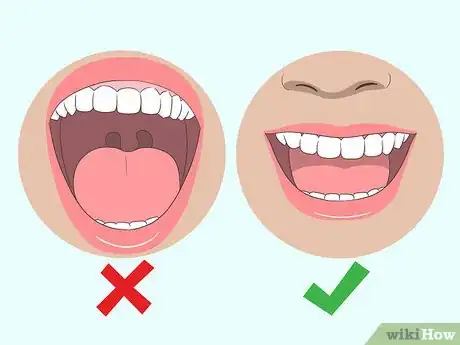





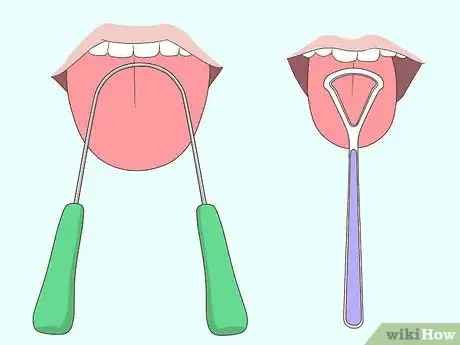
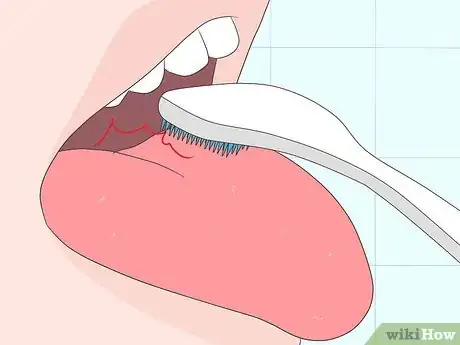


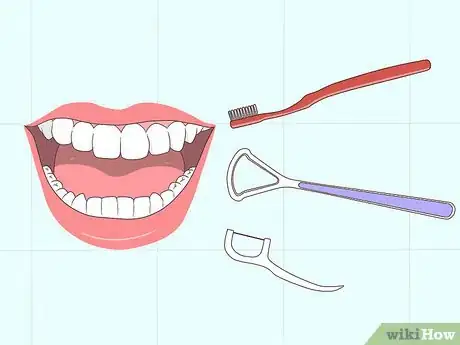






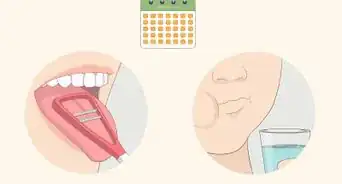

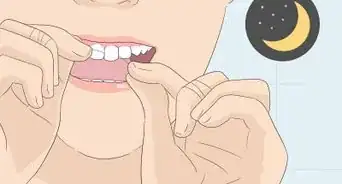
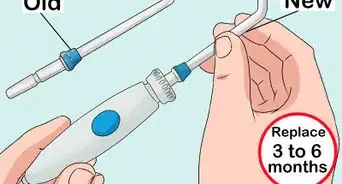
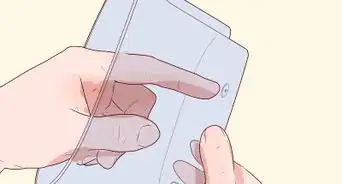


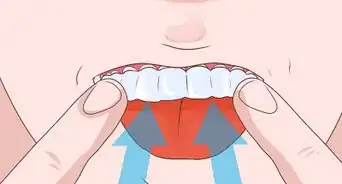
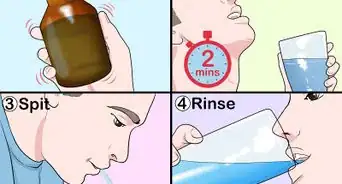










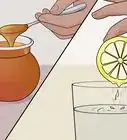




































Medical Disclaimer
The content of this article is not intended to be a substitute for professional medical advice, examination, diagnosis, or treatment. You should always contact your doctor or other qualified healthcare professional before starting, changing, or stopping any kind of health treatment.
Read More...